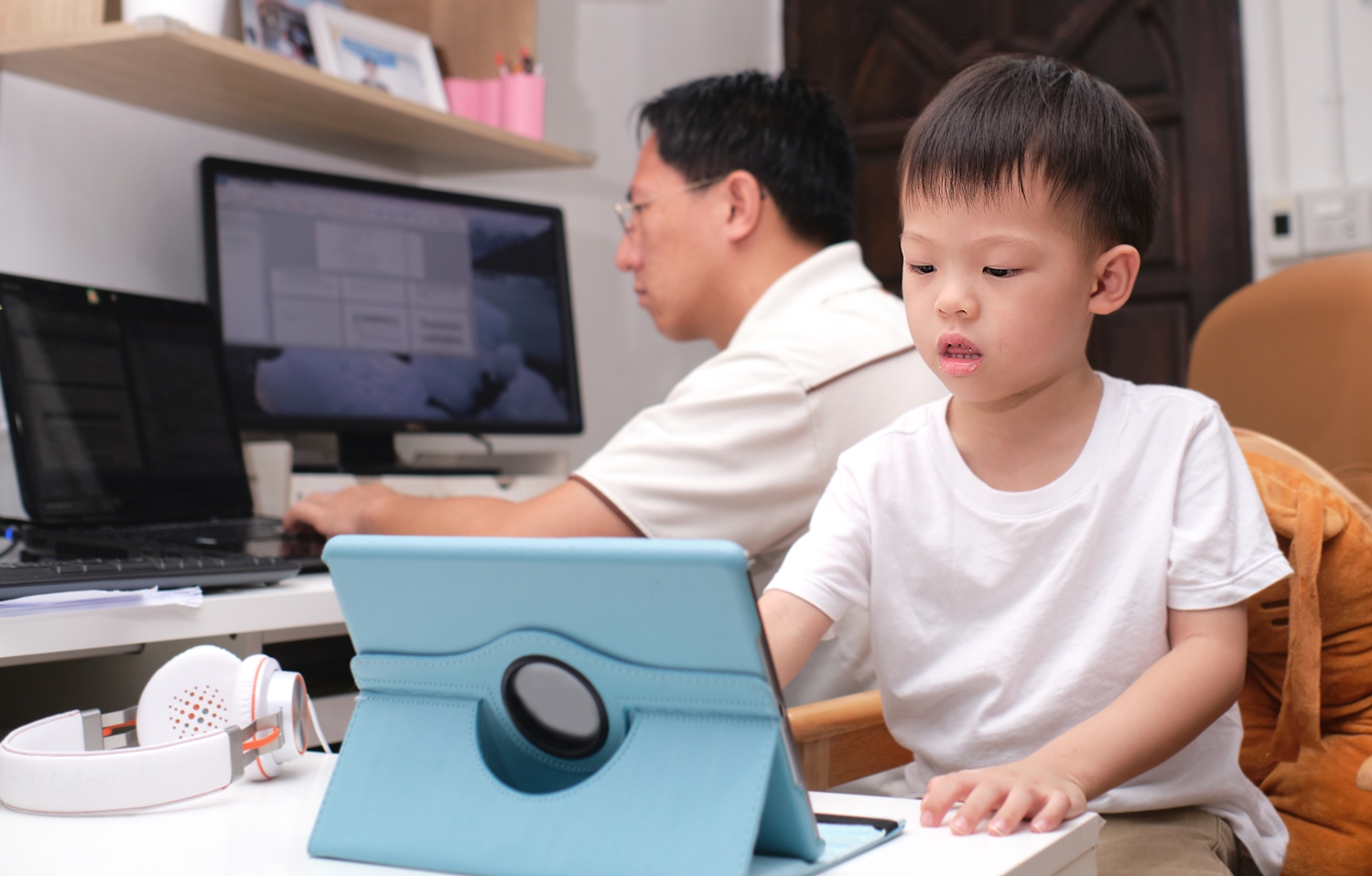Healthy Family, Happy Life Resources
In this section:
-
– packing a healthy lunchbox
-
– offering healthy snacks
-
– tips to overcome fussy eating
Preschool readiness tips
Preschool helps to develop and broaden the way children experience education. During your child’s preschool-age years, they’ll get offered different opportunities to learn and have fun alongside children their own age. Preschool will also offer certain activities that will help your child get ready for the transition to school.
For tips and information about getting you and your child ready for preschool, see the ‘Welcome to preschool’ booklet in English and in Chinese

Healthy eating
Healthy eating and packing a healthy lunchbox
Children should be eating a variety of foods from the five food groups from the Australian Guide to Healthy Eating (in English, and in Chinese Simplified) including:
-
• Grain and cereal foods including mostly wholegrain options
-
• A variety of different types and colours of fruits and vegetables (including legumes/beans)
-
• Dairy foods including full fat milk, yoghurt and cheese or alternatives
-
• Food high in protein and rich in iron including lean meats, poultry, fish eggs and tofu
-
• Water
View the Eat Healthy resource (in English, and in Chinese) for more information on healthy eating for children aged 2-5 years.
Find out more information on the five food groups in English, and in Chinese.
A healthy lunchbox should contain a variety of foods from the five food groups. Don’t pack too much food or too many options as this can be overwhelming for your child. Pack enough food and drink for the amount of time they will be in care.
Grain and cereal foods (mostly wholegrain options)
Grains and cereals provide important nutrients and energy for growing children. Serve wholemeal, wholegrain and/or high fibre varieties where possible, e.g. wholemeal bread, oat (oat porridge) as this will help keep your child feeling fuller for longer and assists in maintain concentration levels. Lunchbox ideas might include: sandwiches, wraps, noodles, pasta, rice, rice noodles, crackers and rice cakes.
Fruit and vegetables
Eating fruit and vegetables every day will help your child grow healthy and strong. Encourage your child to eat a variety of different fruits and vegetables. Serving a variety of different fruit and vegetables will provide a daily source of vitamins, minerals and fibre. Fruit and vegetables should be chopped into bite size pieces and stored in containers allowing for a quick and easy snack for children to eat on the go. Choosing fruit and vegetables that are in season will ensure you will get the best quality produce at the lowest costs. Lunchbox ideas might include: cucumber, carrot and celery sticks or fresh fruit such as apple, pear, strawberries or kiwi fruit.
Dairy and dairy alternatives
Dairy and dairy substitutes are an important source of protein and calcium which help to develop strong bones and teeth. Reduced fat dairy is recommended for children aged over 2 years, as these types of foods are high in saturated fats. Lunchbox ideas might include: cheese slice, cheese in sandwiches, yoghurt, plain milk and calcium-enriched soy alternatives (soy milk, soy yoghurt). It is important to ensure when choosing any dairy substitute that the item is calcium fortified as this will ensure your child is getting the benefits from the foods for healthy growth and development of their bones and teeth.
Meats and alternatives
Meat and alternative proteins provide iron and protein in our diets. Choose lean meat (e.g. pork, beef). It is important to limit the intake of processed meats such as deli meats and sausages, BBQ pork, Chinese sausage, luncheon meat, meat balls, fish balls, beef balls etc. as these are high in saturated fat and salt. Lunchbox ideas might include: cold roast beef, lamb, pork, chicken (skinless), tuna or salmon as a filling in sandwiches, rolls and wraps, egg sandwich, baked beans or lentil patty, soy products such as tofu.
Include water
Children require at least 5 cups of fluid per day and the best source of fluid is tap water. It contains fluoride which helps protect against tooth decay. Make sure you pack your child’s lunchbox with a refillable drink bottle so it can be refilled throughout the day. Packing a frozen drink bottle will also ensure your child’s lunchbox stays cool throughout the day.

Items to leave out of a lunchbox:
Items to avoid adding to the lunch box are those foods that are high in sugar, saturated fat and salt that are often low in nutrients for healthy growth and development. They include:
-
• Lollies, chocolates
-
• Jelly cups
-
• Cakes and doughnuts
-
• Sweet muffins, biscuits, egg rolls, rice chips
-
• Muesli /cereal bars
-
• Fruit bars and fruit straps
-
• Potato chips, corn chips
-
• Oven-baked savoury biscuits
-
• Processed meats such as devon and salami
-
• Sugar sweetened drinks such as cordial, soft drink, fruit juice
-
• Instant noodles
-
• Preserved plums and syrup treated food
-
• Ice cream
Offering healthy snacks
It is important to offer your child healthy snacks throughout the day to sustain them between meal times. Choose snacks based on fruit, vegetables, milk, cheese, yogurt, high fibre or wholegrain breads, crackers and cereals. Some tips to make healthy snacks easy include:
-
• Use snacks as a way to increase fruit and vegetable intake
-
• Do preparation ahead (washing and chopping fruit and vegetables), keep in the fridge in containers ready for use
-
• Keep a range of healthy snacks at home e.g. popcorn, vegetable dips, cheese sticks, boiled eggs
-
• Cook healthy snacks in bulk and freeze in small portions ready for reheating e.g. savory muffins, zucchini slice
-
• Have meals and snacks at the same time each day to help establish a good routine
For more information on healthy lunchboxes and ideas for healthy snacks options see the factsheet in English, and in Chinese.
Examples of healthy cooking methods
Steaming, blanching, roasting, frying with less oil, frying with less oil Choose natural ingredients, herbs (e.g. garlic, mint, bay leaf, coriander) for seasonings, avoid ready-made seasonings e.g. fish sauce, chicken powder, oyster sauce, sauce made from canned soup.
Tips to overcome fussy eating
Fussy eating is a common issue of concern for all parents. It is also normal for children to like something one day and dislike it the next. Fussy eating is a normal part of a child’s development. Is it a result of normal changes in their growth, appetite, development and nutritional needs. Factors that contribute to children being challenging or fussy eaters include:
-
• Repetitive eating between meals
-
• Distractions (e.g. keeping the TV on during mealtimes)
-
• Asserting their independence
-
• Growth rates
-
• Over exposure to highly processed, sugary and/or salty foods
-
• Tiredness
Don’t be put off by your child refusing to eat some foods. Your child may need to be offered a new food up to ten times before they will choose to eat it. Encourage your child to explore new foods by allowing them to touch, lick and smell a new food before offering it to them. Offering a new food with a food you know they will eat. If your child refuses, try offering the new food a week later.
Make sure you involve your child in choosing and preparing food. Giving your child the opportunity to have a say in what they are eating is an important part of helping them to explore their likes and dislikes.
Meal time strategies for you and your child to try include:
-
• Be a role model and role model healthy eating. If your child see others enjoying healthy foods they are far more likely to try them
-
• Make meal times a positive family experience. Always stay calm and try not to react in a negative way
-
• Avoid using sweets such as lollies, chocolate or dessert as rewards
-
• Set up routines around meal times such as always eating at the dinner table and always washing hands before eating
-
• From an early age encourage self-feeding and exploration of food. Don’t get concerned about mess
-
• If the meal or snack is not eaten, take it away and try offering it again later when your child is hungry
-
• Involve them in simple, age appropriate meal preparation tasks e.g. washing fruit and vegetables in the sink
For more information see the Fuss Free Mealtimes resource in English and in Chinese.

Physical activity benefits and ideas
Physical activity is associated with a wide range of health benefits for your child and it is beneficial across their lifespan as they gain skills in movement. Some important health benefits of being physically active during childhood include:
-
• Skeletal development and bone strength
-
• Supporting brain development
-
• Increased muscle control, balance and coordination
-
• Improved overall wellbeing
-
• Increased likelihood of physical activity throughout their life
Participating in physical activity and limiting sedentary behaviour is central to a child’s health, now and later in life. Being active can positively affects sleep patterns, mental health, concentration, self-esteem and confidence. It also helps to achieve and maintain a healthy weight and relationship with movement as they get older.
Tips for you and your child to get active include:
-
• Time – create some time in your day. This can be the 5-10 minutes before or after dinner or school.
-
• Space – find some places close to home with open space.
-
• Cost – when we think of movement, think of ways children can get moving. It doesn’t have to be organised sport for it to be beneficial. It can be regular visits to the park and/or exploring the neighbourhood.
-
• Equipment – select activities that require minimal facilities or equipment, such as walking, jogging or skipping ropes.
-
• Be a positive role model – if they see you enjoying the activity they will too.
For more information visit see the Get Active factsheet in English and in Chinese.
Reducing screen time
As children grow they need more time being active, and less sitting time each day to be healthy. For healthy development, it is recommended that children aged 2-5 years have no more than 1 hour per day of screen time. If you choose to use screens with your child, it’s important to use age-appropriate, quality content.
Learn how you can manage screen time at home by viewing the ‘Turn off screens’ factsheet in English, and in Chinese

Improving sleep
Getting enough sleep is important for overall health and wellbeing of children at every age. Children cannot manage sleep on their own and need support from parents and families to set up sleep routines. By creating positive, regular sleep habits early on, encourages children to grow, learn and develop. Children aged 2-5 years will still need some support from you as their parents/carers.
Tips to help your child to get more sleep include:
-
– Ensure a consistent bedtime routine
-
– Allow some relaxation time before such as a bath, reading or relaxing activities
-
– Ensure your child spends time outdoors during the day to exercise and move their bodies
For more information to help manage sleep see the understanding sleep factsheet in English, and in Chinese.
Feedback
Tell us about your experience with using this webpage by answering these quick questions, please click here.



